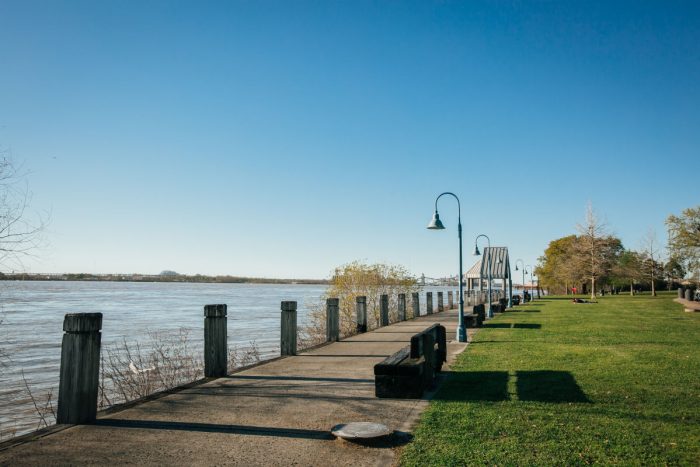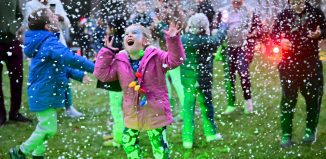D. None of the Above: When a setting becomes much more than just a backdrop
By Daniel Dunaief

We’ve only visited The Fly, a grassy area behind Audubon Park in New Orleans that sits along the edge of the Mississippi River, four times, and yet we can’t possibly travel to the Crescent City without stopping there.
A wide open space that draws students from nearby Tulane and Loyola universities, residents of all ages, screeching seagulls and supersized cormorants that look like genetically altered cousins of Long Island’s water foul, The Fly has hosted some of our most enjoyable visits to see our freshman son in college.
The first time we walked to The Fly, our son was in that miserable, confusing, bees-buzzing-around-his-overlong-hair state when he wasn’t sure where he wanted to attend college and when everything, particularly enthusiastic parents, was irritating.
We had to wait what seemed like forever in searing heat for a freight train with endless cars to cross in front of us to climb over a small hill and reach The Fly. The endless train took so long to pass at a snail’s pace that my son and I sat down on dry grass, while my wife took a few pictures. We tried to keep the moment light, even though our son felt the weight of college uncertainty on his broad shoulders.
When the gates finally went up and we crossed the tracks, the first thing I noticed was the relief the refreshing gusts of wind that came off the river provided.
As we approached the water, we passed young families sitting on blankets and eating picnic lunches, college students playing “never have I ever” games and birds lifting off and circling the shoreline of the river, using their bodies as kites in the swirling winds.
The open green space between the back of the zoo at Audubon Park and the river energized my son and me, calling to us to play.
As we inched closer to the pathway near the river, we stared into the active water, which looked as busy as a bustling city. The main current in the middle traveled one way, while swirling eddies circled near the shore.
Sitting on a sturdy wooden bench, we soaked in the scene and could see our son’s shoulders lower and his breathing slow. The water show helped allay any anxiety he had about class assignments, making friends, learning about a new place, or living far from home.
An ocean going cargo ship passed within 100 feet of us. These enormous ships, sometimes pulled by muscular tugboats, seemed impossibly close, acting like an outdoor theater with an oversized screen.
During several other visits to The Fly, we have delighted in the unexpected. Once, we brought a football and ran patterns in a heavy but warm rain while my wife watched comfortably from the car. Playing on an empty, soggy field with my son made me feel as if I were jogging through the fountain of youth.
While the Fly has become one of my favorite places to visit, I have increasingly come to see settings as much more than backdrops for life and action: they have become like characters, encouraging, inspiring, challenging and reviving us. Like the salty smell of West Meadow Beach, they can also give us the chance to travel through time in our minds, reminding us of earlier visits and the people who traveled with us through life to these locations.
Our son has visited The Fly several times over the last few months. He has taken short videos of the moving water, the frolicking birds, and that first wooden bench where we shared a respite from the college process. The videos he sends are a short visit with him and our friend The Fly.







